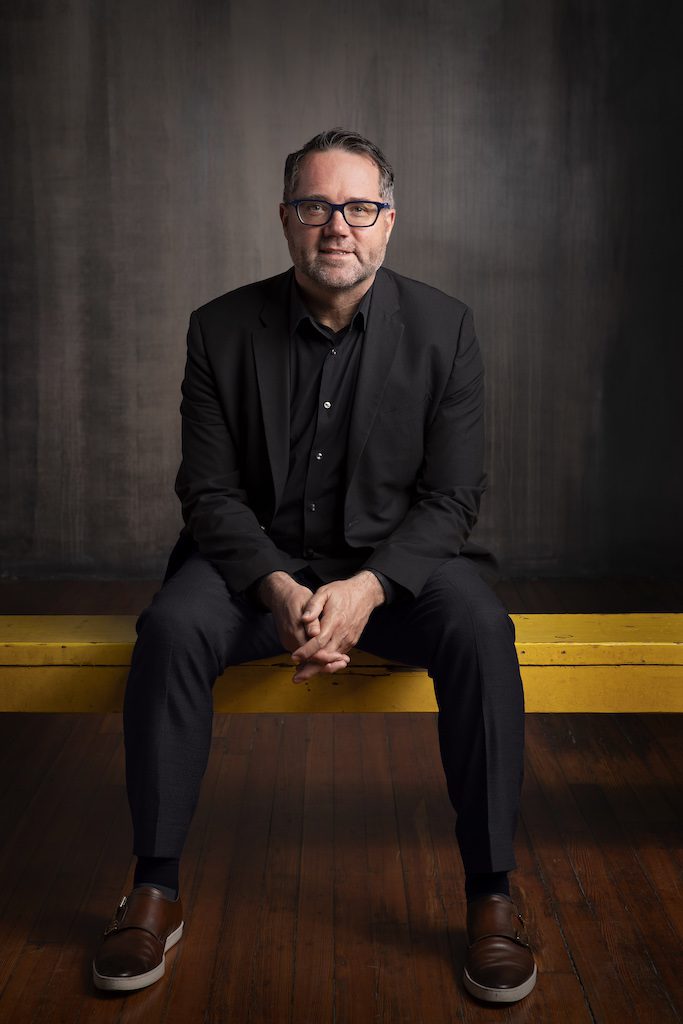Professional Development expert Lyndon Friesen explores the fundamental mindset change that needs to take place in organizations looking to successfully navigate change.
Written by Lyndon Friesen, who leads our Professional Development arm of Outback Team Building, called Ignitor. Over the past 10 years, Lyndon and his skilled team of Facilitators have led over 800 different learning and development events for over 500 different organizations across North America.

Change isn’t just an organizational challenge. It’s a human one.
Most organizational change begins with good intent: a belief that a new opportunity, structure, or system will create a better future.
But even when the reason for change is positive, the experience of going through it can feel disruptive, uncomfortable, or even threatening, depending on the person.
That’s why successful change management starts with people.
Before you map timelines or define deliverables, you need to understand how your people relate to change, because that relationship will determine whether they resist, comply, or fully commit.
Change Leadership is More Effective Than Change Management
Let’s start here:
I’m not a big fan of the term change management.
Managing change makes it sound like you’re reacting to something that’s already happening, keeping it controlled and contained.
In my opinion, we’re better off viewing it as change leadership.
Why?
Leading change is different. It’s about creating the conditions where people can succeed through change, rather than simply minimizing its disruption.
This distinction matters because change leadership puts the emphasis on people—the ones who will make the change possible—instead of just the mechanics of implementation.
People Experience Change in Different Ways
Not everyone sees change the same way. For some, it’s exciting and offers a chance to grow, innovate, and stretch their skills. For others, it feels unsettling or exhausting.
These differences aren’t random.
Each person’s response to change is shaped by their own history, including personal and professional moments that have built (or eroded) trust in the idea that change will lead somewhere better.
For some, past experiences with change have been empowering. For others, they may carry the memory of moments where change felt like the rug was pulled out from under them.
When you realize that your organization is essentially the sum of its individual employees and, by extension, their unique relationships with change, you start to see why a one-size-fits-all approach often fails.
Leaders Must Understand Individual Relationships with Change
If you want to lead change effectively, you have to understand how the people on your team view it.
That’s not optional. It’s a prerequisite.
Before you introduce a new system, process, or structure, ask yourself:
- How do my people tend to respond to change?
- What experiences might be shaping that response?
- Do they see this as an opportunity or a risk?
These insights aren’t just handy to have.
Without them, even the best-planned change efforts can stumble because the people executing them are unprepared or unwilling to engage.
Your Own Relationship with Change Shapes Your Leadership
Before you can understand others’ perspectives, you need to understand your own.
You can look introspectively and determine a few things, including:
- Does change energize you or create stress?
- Do you view it as an opportunity or a threat to stability?
- How might your own perspective influence the way you lead others through it?
Your personal approach to change sets the tone for the entire organization.
If you project confidence and curiosity, your team is more likely to do the same. If you project anxiety or hesitation, that will ripple through the group just as quickly.
The True Cost of Looking at Processes Before People in Change Leadership
Leaders who skip the people-first step often move straight to tactics, like restructuring teams, introducing new tools, or launching major initiatives, without considering how those changes will be received.
Sometimes the resistance is obvious: pushback in meetings, reluctance to adopt new practices, and slower output.
More often, it’s subtle.
People go through the motions but disengage emotionally. They delay decisions, avoid accountability, or revert to old habits.
This isn’t incompetence or lack of commitment. It’s a natural reaction to change that doesn’t feel understood or supported.
And it’s why so many change efforts fail—not because the plan was flawed, but because the people carrying it out weren’t ready (or adequately supported) to embrace it.
Building the First Foundation for Change Leadership
Think of this as building block one in leading change: before you talk about what’s changing or how it will happen, take the time to understand how your people see it.
That means:
- Creating safe spaces for open conversation
- Listening without judgment, even when the feedback is hard to hear
- Recognizing that some people will need more trust, context, and reassurance than others before they can move forward
When this is step one in your change leadership process, you’re not just preparing people for the change in front of them. You’re building their capacity to navigate future change with greater confidence and less resistance.
3 Ways to Make Change Easier to Embrace
You can’t rewrite someone’s change history, but you can create an environment that encourages openness and trust.
Here’s where to start:
1. Create Space for Honest Conversations
Ask your team how they typically respond to change. Listen without interruption or judgement. Sometimes, simply being heard is enough to lower resistance.
2. Connect Meaning to the Change
Show how this shift supports both organizational goals and individual priorities. People move faster when they understand the “why” behind the “what.”
3. Make the Path Visible
Outline what’s changing, what’s staying the same, and what support will be in place. Clarity is one of the most powerful antidotes to anxiety.
These aren’t sales tactics for the change, they’re the groundwork that allows people to embrace it.
Leading Change is a Leadership Skill
Change is inevitable. How you lead through it is a choice.
Start with people first, process second, and you’ll set the stage for stronger buy-in, faster adaptation, and better outcomes.
If you want to explore this further with your team, Outback’s Professional Development programs, like Positive Team Dynamics, Clear Communication, and Emotional Intelligence, are designed to help leaders navigate change with clarity, confidence, and trust.
Because leading change isn’t just about processes. It’s about people. And when you start there, you give your team the best chance to succeed.
Learn to lead through change more effectively.
Get in touch with our Employee Engagement Consultants today to learn how you can use empower a stronger, more confident team that can successfully execute organizational change.



